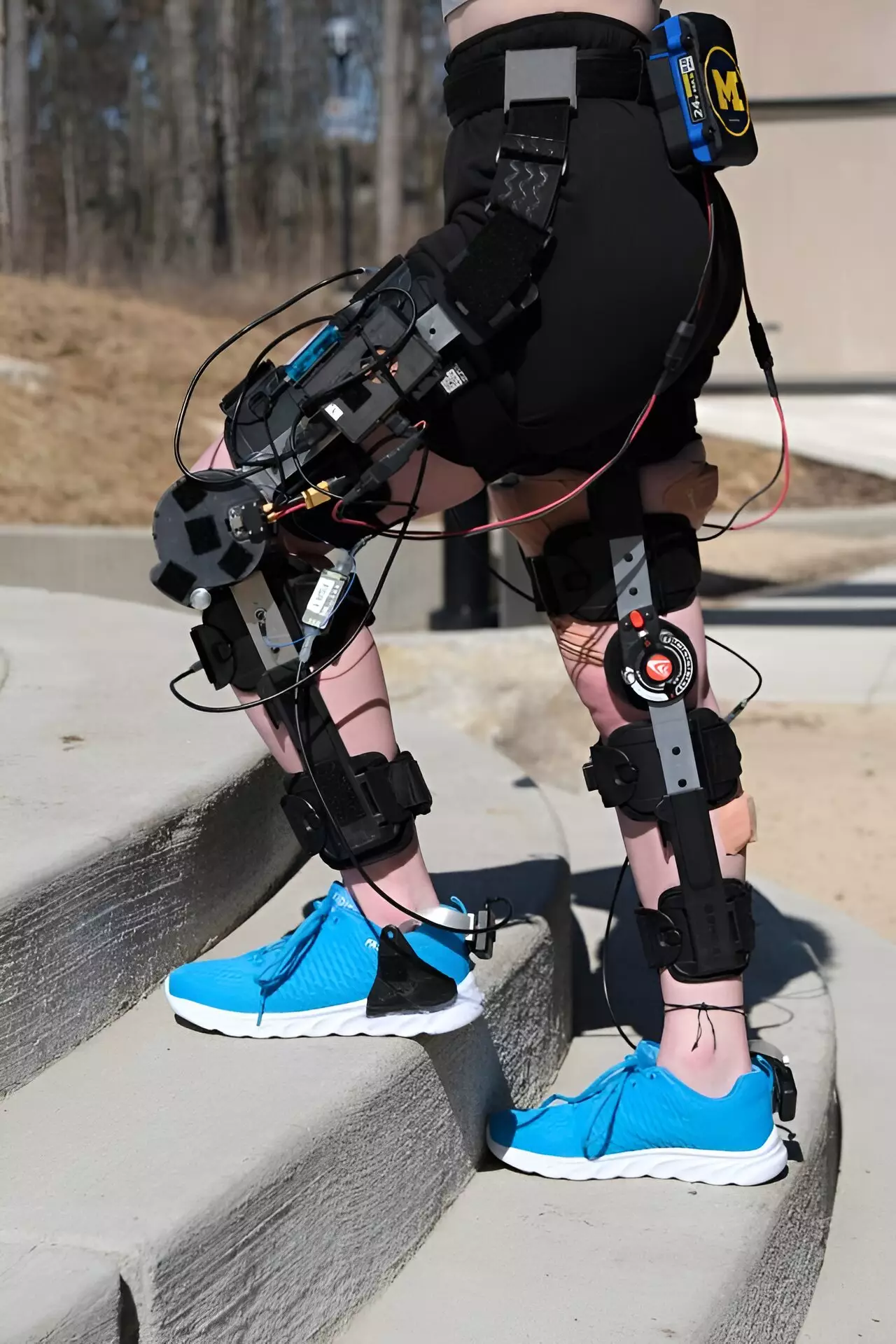In the evolving landscape of workplace safety and ergonomic design, the introduction of knee exoskeletons marks a notable advancement. Developed at the University of Michigan, these innovative devices leverage commercially available knee braces and drone motors to alleviate fatigue during strenuous lifting and carrying tasks. This novel approach addresses a critical issue within industries that require repetitive physical effort, as it seeks to improve workers’ posture and ultimately reduce the risk of injury associated with overexertion and poor lifting techniques.
Traditional back-support solutions, such as back braces, focus primarily on providing direct support to the spine. However, the Michigan researchers, led by robotics professor Robert Gregg, argue that this methodology may hinder proper lifting form. Instead, the team’s knee exoskeletons target the quadriceps muscles, which are essential for safe squat lifting movements. By reducing the load on a worker’s back while empowering the legs, this device offers a more effective and less intrusive solution compared to conventional back exoskeletons, which can be bulky and restrictive in movement.
These knee exoskeletons are designed to encourage optimal lifting postures even as fatigue sets in. The devices provide the necessary augmentation to enhance leg strength during lifting tasks, thus maintaining a worker’s form, which is particularly relevant in environments such as construction or manufacturing where lifting practices are routine.
In a recent study detailed in the journal *Science Robotics,* participants were put through a series of tests involving lifting and carrying a 20-pound kettlebell, simulating conditions workers might encounter on the job. The trials involved various lifting techniques, including movements on flat surfaces and on inclines, as well as stair navigation. Data revealed that the use of knee exoskeletons allowed participants to sustain better posture even after they experienced fatigue, providing vital support that facilitated faster lifting speeds—only 1% slower than their pre-fatigued performance as opposed to a significant 44% decrease without the assistive technology.
This finding is crucial for workplace efficiency. When workers grow fatigued, their postures can deteriorate, leading to an increased likelihood of injury. The study emphasizes that maintaining an upright posture is paramount in perimeter safety.
A central challenge with exoskeleton technology has been ensuring ease of wear and capability for natural movement. The Michigan team has successfully addressed this through a sophisticated design that permits a fluid knee motion, thanks in part to the unique gear arrangement of the motors. More than just physical design, the exoskeletons harness advanced software algorithms that tailor assistance based on real-time data. By monitoring knee angles, limb orientations, and even pressure from sensors placed in shoes, the system offers immediate, context-sensitive support while adapting seamlessly to users’ movements at an impressive rate of 150 measurements per second.
This dynamic approach distinguishes the Michigan knee exoskeletons from many existing devices that often struggle between tasks, employing fixed patterns that do not account for the fluid nature of lifting activities.
The initial prototypes of these knee exoskeletons are projected to cost around $4,000 per pair, but with anticipated large-scale production, that figure could decrease to around $2,000. This potential reduction in cost makes the technology feasible for broader market adoption. The demand for innovative workplace safety solutions is rising, encouraging the team to apply for patents and seek partnerships for commercialization.
The development of knee exoskeletons at the University of Michigan represents a significant stride towards safeguarding workers in physically demanding roles. By targeting the quadriceps to support proper lifting techniques, these devices not only enhance efficiency but also potentially prevent injuries, paving the way for widespread adoption in industries prone to physical strain. As the technology continues to evolve and find its place in the market, it promises an era of improved worker safety, wellbeing, and productivity in lifting-intensive sectors.


Leave a Reply